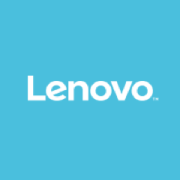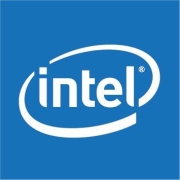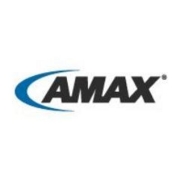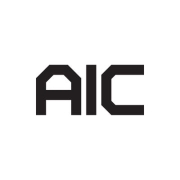Rack Servers are essential in modern data centers, offering scalability, efficiency, and high-density configuration. They integrate seamlessly into existing infrastructures, allowing businesses to optimize computing resources effectively.
These servers provide a modular approach, enabling businesses to scale operations based on demand without making significant changes to the existing infrastructure. Users appreciate the flexibility and customization Rack Servers offer, allowing them to choose specific configurations that best fit their operational needs. With advancements in cooling technologies and energy-efficient components, these servers are not only powerful but also environmentally friendly, helping organizations reduce their carbon footprint while maintaining performance.
What are critical features of Rack Servers?In industries like finance and healthcare, Rack Servers are implemented to manage large amounts of data securely and efficiently. They support complex applications and offer customization options crucial for compliance and data protection standards required in these sectors. Industries leverage these servers for reliable performance and adaptability to technological advancements.
Rack Servers are helpful for organizations as they provide scalable and efficient solutions for managing IT infrastructure. They allow businesses to keep up with technological changes and ensure continuity by offering reliable server solutions with high levels of performance and customization.
| Product | Market Share (%) |
|---|---|
| Dell PowerEdge R-Series | 27.4% |
| HPE ProLiant DL Servers | 22.0% |
| Lenovo ThinkSystem Rack Servers | 15.2% |
| Other | 35.400000000000006% |





























You can often find rack servers in data centers because of the scalability they provide. Assembling the servers on racks also maximizes air flow and simplifies maintenance and diagnostics. If there is a problem, you can just slide the server out of the rack.
A type of rack server called a rugged rack server is often used in military and industrial applications. These servers are certified to military standards and stress-tested to work under extreme heat or cold, impact, high humidity, or vibration during transport.
One of the characteristics of rack servers is their convenience. IT personnel can slide them in and out of the server bay with ease. This feature enables technicians to swap parts if needed without the need for downtime.
The resources, services, and performance of the server will depend on the needs of a program or application that works on the server. Different use cases require unique server configurations and resources. For instance, a server installed in a remote military installation will require mobility, which a server installed in a commercial warehouse will not.
The number of servers a bay can hold will depend on the depth of the rack and its width. Most rack servers’ width is 19 inches, to fit a standard 19-inch server rack configuration.
Industry racks come in 19-inch, 23-inch and 24-inch widths. The height of the server bays is measured in rack units. A rack unit is 1.75 inches, and the most common rack heights are 42 and 44 units. Since this is equivalent to 77 inches of usable space, it allows you to stack a lot of servers.
Blade servers are the smallest in terms of size. They consist of a thin, lightweight, modular computer that can be positioned upright without taking much space. They often sit inside racks in what is called “blade enclosures” or systems. Blade servers are smaller and more mobile than rack servers.
Blade servers are, like rack servers, slideable and can be swapped hot. As such, they can be easily scaled and upgraded. They also consume less power than tower and rack mount servers. The downside of blade servers is that they are limited in their expandability because of their small size.
As a general rule, servers are more expensive than consumer-grade computers. They are designed, built, and tested to a stricter standard, thus vendors can charge more. A rack server can go from $400 and upwards, depending on the chassis. A mobile chassis, like the ones used for military operations, can be $1000 or more.
Rack servers offer much greater storage capacity than blade servers but still in a small, stackable size. Their convenience makes them more in demand, hence they cost more.
Rack Servers are designed to maximize physical space usage by stacking multiple servers in a single rack. This vertical configuration not only saves space but also allows for better cable management and cooling efficiency. You can optimize power usage and streamline maintenance tasks, ultimately improving the overall data center efficiency.
What factors should you consider when choosing a Rack Server?When selecting a Rack Server, consider factors like processing power, memory capacity, and expansion options. It's important to evaluate the cooling requirements and ensure compatibility with existing infrastructure. Assess support for virtualization and scalability to future-proof your investment in an evolving IT landscape.
Can Rack Servers support virtualization effectively?Yes, Rack Servers are highly effective for virtualization as they offer powerful processors and large memory capacities. This enables you to run multiple virtual machines efficiently on a single server. Rack Servers designed for virtualization often include features like redundant power supplies and enhanced cooling to ensure stable and continuous operation.
What are the cost advantages of using Rack Servers?Rack Servers offer significant cost advantages in terms of density and scalability. By maximizing space within a rack, you can reduce physical infrastructure costs. Shared resources among multiple servers help in minimizing power consumption. The modular design allows for easy upgrades and maintenance, reducing downtime and associated costs.
Why is cooling important for Rack Servers?Cooling is crucial for Rack Servers as they generate significant heat due to dense configurations and high-performance components. Efficient cooling prevents overheating, which can cause hardware failures and data loss. Implementing adequate cooling helps maintain optimal performance levels and extends the lifespan of the servers.